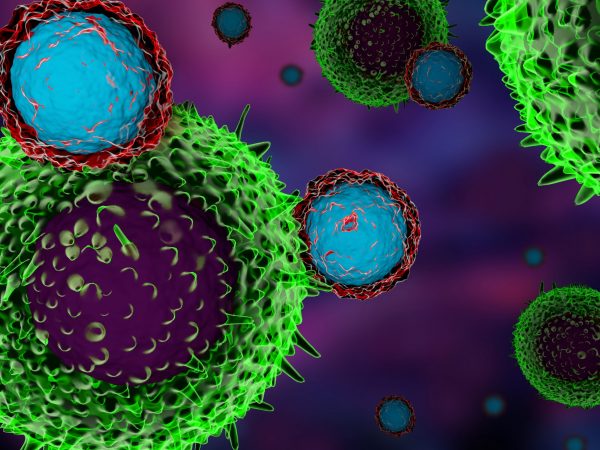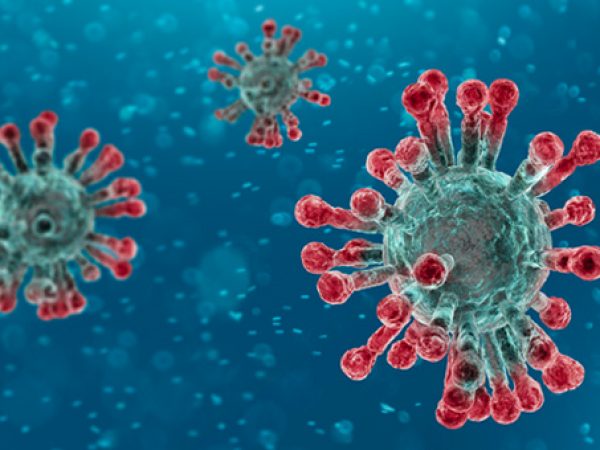December Editors’ Picks from AACR Journals
As the year winds down, here’s our final edition of Editors’ Picks for 2019. This regular feature highlights one “must read” article from each journal issue published by the AACR in a given month. This December, articles include results from three clinical trials, an evaluation of a first-in-class FGFR4 inhibitor, and an analysis of breast cancer survival disparities in New Jersey, among others. As always, articles highlighted here are freely available for a limited time.
Journal: Cancer Prevention Research
Retinoids and rexinoids are antiproliferative agents that have shown promise as chemoprevention agents for cancer. 9-cis retinoic acid (9-cRA) is a potent rexinoid; however, 9-cRA is associated with toxicities, such as bone fractures, skin lesions, and elevated serum calcium. An alternative to 9-cRA is bexarotene, but it is associated with dose-limiting hyperlipidemia and hypothyroidism. In this phase I dose escalation study, the authors evaluated the safety and pharmacokinetics of 9cUAB30, a synthetic analogue of 9-cRA, and determined a dose for future phase II studies. The trial enrolled 53 healthy adults between the ages of 18 and 65 years who received one of five different doses of either 9cUAB30 or placebo. There were no dose-limiting toxicities associated with 9cUAB30, and neither serum triglycerides nor cholesterol were persistently elevated. One participant in the 20 mg dose level and two participants in the 240 mg dose level experienced treatment-emergent grade 3 hypertension; no other grade 3 adverse events were observed. Linear pharmacokinetics were observed through 160 mg. The authors concluded that 9cUAB30 is well tolerated and that the recommended phase II dose is 160 mg once daily. This article was highlighted in the December issue.
Journal: Molecular Cancer Research
While most patients with estrogen receptor (ER)-positive breast cancers treated with first-line selective estrogen receptor modulator (SERM) drugs initially respond to therapy, many patients will eventually develop resistance, highlighting a need to develop novel approaches for the treatment of SERM-resistant breast cancers. The inhibition of bromodomain and extraterminal domain (BET) proteins as a potential treatment for several cancer types, including ER-positive breast cancers, has recently come to the fore, yet the role that individual BET proteins play in ERα-dependent transcription remains unknown. In this study, the authors found that the BET protein BRD3 acted as a modulator of total BET protein levels and BET protein activity in ER-positive breast cancer cells. Additionally, the researchers report that BRD3 is recruited to ERα-binding sites that are associated with genes highly responsive to estradiol. Collectively, the authors suggest that targeting BRD3 with BET inhibitors may be a viable therapeutic strategy in ERα-positive breast cancers. This article was highlighted in the December issue.
Journal: Molecular Cancer Therapeutics
The tyrosine kinase FGFR4 has recently emerged as a potential therapeutic target for the treatment of hepatocellular carcinoma (HCC). This study describes the development of the first-in-class FGFR4 inhibitor FGF401, which was highly selective for this paralogue as compared with FGFR1, FGFR2, and FGFR3. Further, treatment with FGF401 was effective in a variety of cancer cell lines and xenograft models that co-express FGFR4, its binding partner FGF19, and its co-receptor KLB. The authors note that this is the first FGFR4 inhibitor to enter clinical trials, and that a phase I/II study evaluating FGFR4 in HCC and other solid tumors is currently ongoing. This article was highlighted in the December issue.
Journal: Cancer Research (December 15 issue)
Modeling Cellular Response in Large-Scale Radiogenomic Databases to Advance Precision Radiotherapy
While radiotherapy is an integral component of cancer treatment for the majority of patients with cancer, this approach is largely based on clinical variables, such as tumor stage, rather than biological features of the tumor. In order to better individualize radiotherapy treatments, the authors of this study developed RadioGx, a computational platform for the integrative analyses of radiosensitivity using radiogenomic datasets derived from preclinical studies. Using RadioGx, the researchers evaluated how different variables, such as specific gene mutations, hypoxic conditions, or certain classes of drugs affected radiosensitivity across large-scale datasets. The authors note that RadioGx could be used to identify biomarkers of intrinsic radiosensitivity or to help select new combination therapies for preclinical evaluation. A related commentary was also published in this issue.
Journal: Cancer Discovery
Fusion oncogenes are common in pediatric cancers. In order to better understand the association between genotype and phenotype in pediatric cancers, the authors examined the role of fetal and adult cellular architectures on the transformation and disease phenotype induced by the ETO2-GLIS2 gene fusion. The authors found that fusion oncogenes, including ETO2-GLIS2, are associated with acute megakaryoblastic leukemia or other myeloid leukemia subtypes in an age-dependent manner. Using an inducible transgenic mouse model, they showed that the expression of ETO2-GLIS2 in fetal hematopoietic stem cells caused rapid megakaryoblastic leukemia, while its expression in adult bone marrow hematopoietic stem cells resulted in delayed development of leukemia. Transcriptome analyses revealed that expression of ETO2-GLIS2 led to differences in activities of transcription factors in an ontogeny-dependent manner. When expression of ETO2-GLIS2 was turned off, terminal differentiation was restored. The authors propose that the aggressiveness and phenotypes of pediatric acute myeloid leukemia are determined by ontogeny-dependent susceptibility to transformation by fusion oncogenes, such as ETO2-GLIS2. This article was highlighted and a related commentary was published in the December issue.
Journal: Clinical Cancer Research (December 15 issue)
The vast majority of patients with gastrointestinal stromal tumors (GIST) treated with the tyrosine kinase inhibitor (TKI) imatinib develop resistance, which is driven by the polyclonal emergence of secondary KIT mutations. The rapid alternation of complementary TKIs may help target resistant subpopulations while minimizing overlapping toxic effects. This study reports on results from a phase Ib clinical trial evaluating the alternation of the TKIs sunitinib and regorafenib in patients with metastatic and/or unresectable TKI-refractory GIST. Fourteen patients were enrolled in the trial; four patients achieved stable disease, which was the best response observed, and the median progression-free survival was 1.9 months. The authors note that this strategy was feasible and well-tolerated and that the combination of drugs with favorable pharmacokinetics could be an effective therapeutic strategy. This article was highlighted in this issue.
Journal: Clinical Cancer Research (December 1 issue)
While the treatment of neuroendocrine tumors (NETs) using peptide receptor radiotherapy (PRRT) with somatostatin receptor 2 (SSTR2) agonists is safe and effective, preclinical models suggest that SSTR2 antagonists can deliver even higher doses of radiation to NETs and may therefore be a more efficacious strategy. This study reports on results from a phase I clinical trial evaluating the SSTR2 antagonist 177Lu-satoreotide tetraxetan in 20 patients with advanced, well-differentiated NETs. Treatment was divided into two cycles, however, during the second cycle, four of seven patients experienced grade 4 hematologic toxicity, and the protocol was modified to reduce the dose of cycle 2 by 50 percent. Six patients received one cycle of treatment and 14 patients received two cycles of treatment; the best overall response rate was 45 percent, including one complete response and eight partial responses. The authors conclude that this initial data is promising, especially given that this patient population was heavily pretreated, and that additional studies are underway to determine the optimal therapeutic dose. This article was highlighted in this issue.
Journal: Cancer Research (December 1 issue)
Syndecan-Mediated Ligation of ECM Proteins Triggers Proliferative Arrest of Disseminated Tumor Cells
Tumor cells are often disseminated throughout the body long before metastases develop, indicating that disseminated tumor cells (DTCs) may sometimes fail to initiate rapid proliferation upon entering tissue. The mechanism underlying this phenomenon remains unclear. In this study, the authors identified the cellular signaling pathway that regulates the proliferative capacity of DTCs. They determined that extracellular matrix (ECM) components of the parenchyma bind syndecan receptors on the DTCs. Engagement of the syndecan receptors results in recruitment of the Par-3-Par-6-atypical PKC protein complex to the plasma membrane and leads to cytosolic release of the Par-1 kinase. Phosphorylated, inactivated Kinase Suppressor of Ras (KSR) scaffolding proteins bind to cytosolic Par-1 and inhibit Ras/ERK signaling, causing inhibition of cell proliferation. The authors found that inhibition of syndecan-mediated signaling restored proliferation of dormant DTCs, allowing them to colonize foreign tissue. Naturally aggressive cancer cells were able to overcome syndecan-mediated inhibition of cell proliferation by either repressing the signaling pathway or by activating a separate pro-proliferative signaling pathway. Together, the results suggest that the dormant nature of DTCs is due, in part, to syndecan-mediated signaling. This article was featured on the cover and was highlighted in this issue.

Journal: Cancer Epidemiology, Biomarkers & Prevention
Despite overall progress in breast cancer survival, there are disparities between demographic groups. Factors that influence prognosis include characteristics of the individual, such as race, socioeconomic status, education, and health insurance. Studies have shown that characteristics of the patient’s neighborhood can also have an impact on breast cancer survival. Identifying neighborhoods with lower breast cancer survival can help cancer control programs prioritize efforts and resources. In this study, the authors calculated survival time for 27,078 women in New Jersey diagnosed with invasive breast cancer between 2010 and 2014 and followed through the end of 2015. Statistical analyses of these data helped identify geographic areas in which women had a higher risk of death from breast cancer. The authors found significant differences in breast cancer survival between different geographic regions, with women who lived in less affluent and more economically segregated neighborhoods having a significantly higher risk of death from breast cancer. The differences between regions were attenuated after adjusting for individual factors and neighborhood characteristics, such as poverty and economic inequality. Compared to poverty, economic inequality – as measured by the index of concentration at the extremes – had a slightly stronger association with breast cancer survival rates. The authors concluded that disparities in breast cancer survival in New Jersey are due to a combination of individual-level and neighborhood-specific socioeconomic factors. This article was highlighted in the December issue.
Journal: Cancer Immunology Research
Glioblastoma is characterized by an immunosuppressive microenvironment and high expression of proangiogenic cytokines, which downregulate T-lymphocyte and innate immune responses, in addition to their roles in promoting tumor angiogenesis. Here, the authors examined whether adding anti-angiogenic therapy to an immune checkpoint inhibitor would help overcome resistance to immune checkpoint inhibition in glioblastoma. Using murine models of glioblastoma, the authors found that combined inhibition of VEGF, Ang-2, and PD-1 significantly improved survival compared with anti-angiogenic therapy alone. The triple therapy increased the numbers of cytotoxic T lymphocytes and decreased the number of myeloid-derived suppressor cells and regulatory T cells in the tumor microenvironment, and transcriptome analysis of glioblastoma microvessels showed higher vascular normalization. The authors propose that triple therapy of VEGF, Ang-2, and PD-1 blockade can overcome tumor immunosuppression through a normalized vasculature. This article was featured on the cover of the December issue.



